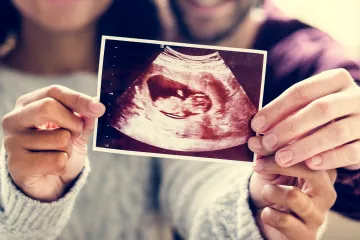Washington D.C., May 5, 2021 / 14:00 pm
The U.S. total fertility rate fell to its lowest-recorded level last year and the number of births was the lowest in 42 years, new federal data published on Wednesday revealed.
According to provisional data of the National Vital Statistics System published by the U.S. Centers for Disease Control (CDC), the total fertility rate in the United States dropped 4% from 2019 to 2020, reaching a record-low. The general fertility rate and overall number of births also declined by 4% last year, with the number of births at its lowest since 1979.
The total fertility rate – an estimate of the number of births that 1,000 women would have in their lifetimes – was only 1,637.5 births per 1,000 women in 2020, well below the “replacement level” rate of 2,100 births per 1,000 women.
W. Brad Wilcox, senior fellow at the Institute for Family Studies, called the report “pretty sobering demographic news.”
He added that “we could be on the cusp of a major demographic shift, or almost like a demographic earthquake here in the United States.”
According to the report, the total fertility rate has been below replacement level “generally” since 1971, and “consistently” since 2007 – just before the global economic crisis of the following year.
The U.S. fertility rate is actually lower than Japan’s in 1988, Wilcox noted. Japan’s fertility rate went on to drop precipitously after that year, he said, effecting a demographic decline with around a million more deaths than births in recent years.
“The question is, are we heading down the Japanese road?” Wilcox asked, pointing to Southern Europe and East Asia as other examples of regions with low birth rates.
For 2020, the general fertility rate stood at 55.8 births per 1,000 women ages 15-44, a record-low.
The overall number of births in the United States fell 4% last year to just more than 3.6 million births in 2020 – the sixth consecutive year that figure has decreased and the lowest number of births since 1979.
There might be a number of causes behind the low birth rates, Wilcox said. While demographers have warned of a possible “baby bust” due to the COVID-19 pandemic and the economic crisis it caused, those numbers would only be revealed in the December statistics at the very end of 2020, he said.
“We would predict that 2021, this year, is going to be even more dramatic” in the declining birth rate, he said, noting that the effects of the COVID-19 pandemic could markedly influence the 2021 birth statistics.
Furthermore, birth rates have fallen since the 2008 economic crisis but have not rebounded as the U.S. economy bounced back from the “Great Recession,” he said, implying that causes other than the economy are also responsible for the decline in fertility rates.
“Delays in marriage” are a large driver of the decline, Wilcox said. The rise of technology impacting social life is another, he said, with fewer people socializing and dating in-person. Adults are also more invested in education and work, he said, and are less likely to view marriage and parenthood as “anchors” of adult life.
While federal policies such as paid parental leave and a generous child allowance could play a role in increasing the birth rate, Wilcox noted that Northern European countries with generous family policies are still seeing birth rates fall.
“That’s not a cure-all,” he said of federal pro-family policies, while noting that they would be "helpful."
(Story continues below)
Among demographic subgroups, the general fertility rate in 2020 dropped 9% for non-Hispanic Asian women, and 4% for non-Hispanic white and non-Hispanic Black women, according to the numbers published by the CDC on Wednesday.
Birth rates among teenagers and young adults continued their steep declines in recent decades.
The provisional birth rate for teenagers ages 15-19 dropped by 8% in 2020, while the provisional birth rate among women ages 20-24 declined by 6% to a record-low 62.8 births per 1,000 women. The birth rate among this subgroup has dropped by 40% since 2007.
While the birth rate among women aged 40-44 had generally risen since 1985, it fell by 2% from 2019 to 2020, to 11.8 births per 1,000 women.






